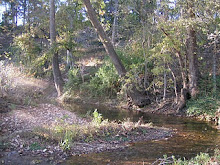I’ve been intrigued in recent months by the county-by-county animation of the U. S. unemployment rate from January, 2007, to March, 2010. It’s at:
http://cohort11.americanobserver.net/latoyaegwuekwe/multimediafinal.html
Also it’s on YouTube at:
http://www.youtube.com/watch?v=QfBZnyJg0Bw
Not only is it sobering to watch the decline of the relatively robust economy of two and half decades, it’s infuriating to focus on some of the details.
On the final frame, March, 2010, you’ll see that most of the country has gone “dark” with an unemployment rate of more than 10 percent.
There are some isolated exceptions which I can’t explain – lots of “red” (5 to 5.9 percent unemployment) in Montana and in business-friendly Texas, plus a few isolated counties around the country.
Meanwhile, across the Great Plains -- in the Dakotas and in the western sections of Oklahoma, Kansas, and Nebraska -- unemployment is for the most part very low, under 3 percent, which is generally considered to be full employment. Again, I’m not sure of all the reasons, but since I’m a professor and have a license to make things up, here’s what I think: 1) those are areas that for the most part have stable populations. If anything, these areas are losing people. Presumably, people who live there are working. If they’re not working, they leave, thus lowering the unemployment rate, 2) much of the employment in that area is agricultural and unemployment rates are calculated based upon non-farm jobs, and 3) the sparse populations mean that the slightest movements up or down in employment will have an outsize effect on the rate.
You’re welcome.
At any rate, by May, 2010, there were two non-western regions where some counties were doing fairly well. One of them was coastal Louisiana. Play the animation again and see that while most of the rest of the country goes dark, the bright colors stay on longer in Louisiana. Even by May, 2010, four coastal Louisiana counties were doing fairly well.
The only other Eastern area where there were more than isolated counties with low unemployment rates was in Northern Virginia.
Southern Louisiana and Northern Virginia with low unemployment? Why? Oil drilling has been driving Southern Louisiana’s economy. I was there in January and it was amazing to see in the middle of a recession that there were “help wanted” billboards. To be sure, these were for skilled jobs: welders, marine licensees, people like that. But there was work, lots of work, for people with the right skills.
And Northern Virginia? Why low unemployment there? That’s an easy answer: where do you think a lot of high-paid Washington government workers live? The economy is tanking, the lights are going out, but with all the government spending and new programs, things are bright in the company town of Washington D. C.
And the Washington people apparently don’t want competition in their low unemployment rate. They seem to be doing their best to help the oil spill throw Louisianans out of work. The feds are fighting in court to idle deep-water drillers. And by hampering oil-spill-fighting boats with goofy safety inspections, dictating where protective berms are placed, and refusing to allow foreign ships to help, it seems like the feds want to prolong the catastrophes of those who work in fishing and tourism.
It all can be kind of depressing. But take heart, all is well.
Legions of federal government workers are working -- working on your health care, working on your bank, working on your oil supply.
I wonder if they know who provides the money for those high-paying jobs and cushy federal benefits.
And I wonder if they know that the lights are going out everywhere else.
Friday, June 25, 2010
Subscribe to:
Post Comments (Atom)

No comments:
Post a Comment